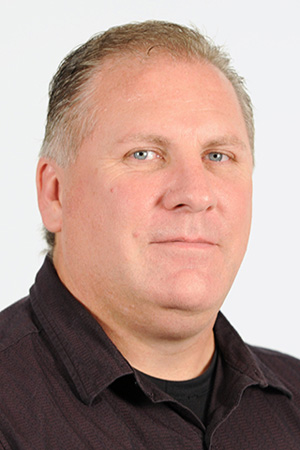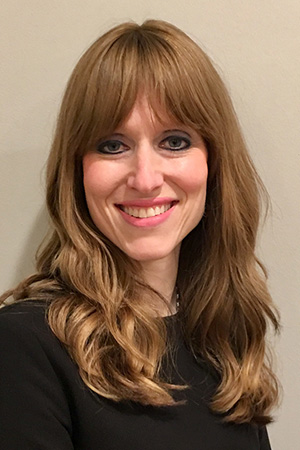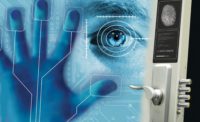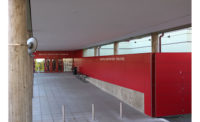The vertical markets that security integrators work in can vary widely. Some integrators choose to focus on a few, often highly specialized types of customer; while others work with almost any vertical, but may narrow their focus by vendor or types of technology they specialize in. Regardless of which approach you take, there are lessons to be learned from some of the trends integrators are seeing and the technologies they are employing in their top verticals.
For example, Joe Liguori, partner, Access Control Technologies Inc., Clifton, N.J., says finance/banking has been a long-term stable vertical for his company. Healthcare, however, has emerged in recent years and is growing by “leaps and bounds,” he describes. “There have been a lot of acquisitions and consolidation in that space. A lot of hospitals we present to today are gigantic, whereas four or five years ago they were just large.” Liguori also points to higher education as the third in his “top three” verticals list.
Healthcare (government-based) and education also feature in the list for Minneapolis-based LVC Companies, says Keith Kranz, sales manager. “Within the last five years we have seen more of the government sector than in the past,” he says. “It is an increasingly bigger percentage of our work as regulations are being required more and more.” Commercial or corporate is another prominent vertical for LVC.
Care Security Systems, New York, also puts healthcare in their top three, along with enterprise-level critical infrastructure and global manufacturing, according to CEO Renee Schwab. “Critical infrastructure demands a very high standard — there is absolutely no room for mistakes,” she says.
SDM spoke with these three prominent security integrators to get further input on trends, drivers and technology in access control, as well as advice for others.

Joe Liguori

Keith Kranz

Renee Schwab
SDM: What is motivating your top vertical market customers to purchase or upgrade their access control right now?
Liguori: Banking and finance corporate customers are highly motivated by regulatory compliance, and protection of large corporate premises and intellectual property. There has been a shift from physical to cyber and intellectual access control. There is a lot of corporate exposure with large buildings and more concern about access to those buildings.
Healthcare is a little bit different. Healthcare is driven by HIPAA and those regulations. There is significant concern with controlling the outside population, especially in terms of angry patients or visitors.
Higher education is most concerned about their students and mobility. Their biggest thing is active shooters and how they lock down facilities in the event that occurs.
Schwab: Cyber and terrorist threats are by far the top items for our customers.
Kranz: Government and schools are driven by the need for accountability of who is going where because of information that is provided or that they are protecting.
As far as commercial, as pricing is coming down all these tenants are being issued credentials by the building management to get in and they don’t want to then use keys to get into a suite. Access is expanding inward. They are on their own system, but using the same credential.
SDM: What have you done with your vertical customers as well as in your own company regarding cyber security?
Liguori: We are trying to understand and learn a bit more about what cyber security means. Consulting with experts and meeting not only with physical security but also the IT side of organizations to understand how they manage content and what concerns they have. Things have also changed in terms of how they provide access to data centers. Years ago we had control of the servers that supported the access control system. That has gone away. Now it is virtual in the IT centers and we have almost no access to them. Any time there is a problem we have to call someone. Internally, we have talked to people that specialize in it and expect that in two to three years we will have a cyber department, if you will.
Kranz: We are choosing to be involved with cyber. As a security contractor we will never be cyber security experts, but we don’t want to add to their concerns. Being able to say ‘these are steps we take’ to protect them from cyber security breaches gives us a little bit of an advantage.
We also have companies we partner with that offer cyber plans and assessments. We offer that service to our customers. Vertical market-wise, I would say the commercial customer is most interested right now. Government is more likely to have their own. But in the government space, knowing that we take it seriously helps us as well.
SDM: What technologies are proving popular in your top verticals?
Kranz: In general we are seeing more of the all-in-one locks. They are quick to install and far less expensive than having them be separated. We have seen some electronic locks with colleges and universities where we are putting electrified locks on every door. In government there is a lot of just maintaining privacy and data closets. The same goes for schools. Any place where there is a network switch access is far stricter.
Liguori: Our verticals are all technology-driven. They are constantly looking to us to keep them abreast of what is going on. In healthcare there is the challenge between heightened security and maintaining an open environment.
In higher education we have talked about the wireless credential with all the facilities and some are using it on a limited basis. Surprisingly we are seeing turnstiles and requests for metal detection there as well. Students can’t be frisked or searched and there is a concern [about] what they are bringing in. This is for specific buildings that have high notoriety, such as libraries where people come in for a long period of time. Banking is more revenue-driven. There it is more about card access and video integration. They tend to be more conventional than the others, but they are upgrading to new Bluetooth readers.
SDM: What lessons have you learned that might help other security integrators in these or other verticals?
Schwab: One of the big lessons we’ve learned is dedicating teams to learn the verticals. It’s not easy to master all the ins and outs of a new industry, and we have a big advantage on new projects when we have worked with similar organizations in the same verticals. Also, paperwork; being successful in these verticals really requires being able to manage the requirements and the paperwork.
Kranz: For government especially it is learning to read the contracts and understanding that without proper documentation you are not getting paid. The biggest lesson we learned the first couple times working in a commercial site was understanding that the customers don’t know. They are relying on someone else to tell them what to do. Most people we work with today have an IT background. Security for them is, ‘You are going on my network.’ You are playing in their realm or on their network, so it is important to provide them the information they require.
Liguori: What we typically do is when a customer indicates a specific request or wants to go in a direction we are not familiar with, we research it and we engage in a pilot on site. We get a feel for the environment. It is a learning process. When we finally get to the point where the client decides that is the direction they want to go, then we understand what our roles are, what the manufacturer has to provide and any fulfillment issues there will be to meet the needs of the customer.
The devil is in the details. You can never ask enough questions or do enough research. You always find something you weren’t aware of. So be prepared.
For example, one particular story comes to mind. Two years ago a banking customer wanted our company to move its access control host and redundant server from New York to New Jersey over the Fourth of July with almost no notice. They told us on July 1. When we started to detail the difficulty, along with our concern about lack of planning, this customer turned to me and said, ‘Anyone can hang a reader on the wall. I keep you guys because you come through when I need you.’ We got it done and they are still a client. I’ll never forget it.
Access Control Doesn’t Have to Interfere With Performance
Organizations often have to balance security against staff performance, particularly when it comes to access control security technology. So, how can organizations utilize access control systems in ways that don’t undermine staff performance? One way is to apply a “Wheel of Convenience” to help identify which access control tools will provide the most secure experience while supporting the work mission. The Wheel of Convenience allows decision-makers to weigh security against convenience. For instance, a workplace needing enhanced security but not quick access might opt for short-range readers while a hospital emergency room needing immediate access would choose a long-range reader providing immediate entry to doctors and nurses.
There are two primary standards for access readers: UHF and microwave. UHF, or Ultra High Frequency, credentials can work on lanyards or access card clips and achieve relatively large reading distances. UHF readers have long been the standard for vehicle identification, but the technology is useful for building security, as well. Because UHF readers will usually be able to read the card at a distance of 12 feet or so, that provides plenty of time for doors to open before the staff member gets to the doorway.
One disadvantage of UHF technology is that UHF readers require line-of-sight, so they won’t work if stored in pockets or briefcases. In some workplaces, this could impinge upon productivity. Also, the technology doesn’t yet support encryption, and with the sophistication of data-grabbing technologies, this may be a liability that makes UHF less suitable for some workplaces.
The second common RFID standard includes microwave readers and credentials. Microwave technology has a more robust signal than UHF, which can be an advantage in settings presenting the possibility of frequency interference from equipment, walls, and other potential barriers. However, this added robustness can impact security if the technology causes doors to open too soon or for longer periods of time than necessary.
The Wheel of Convenience can help determine which type of security access meets the needs of any workplace. By helping organizations weigh security against convenience, it can help the find the perfect security access tool. — Contributed by Curtis Dennis, technical lead for Nedap Identification Systems in the Americas
For more on access control in vertical markets visit the following articles:
“How to Succeed in the Top 5 Access Control Verticals”
“Intel for Security Integrators About Smart Buildings”
“State of the Market: Access Control 2017”
“What It Takes to Be Successful in the K-12 Security Market”




